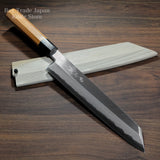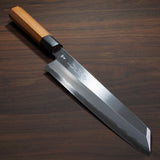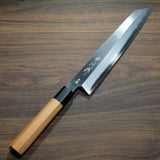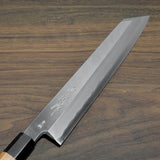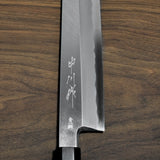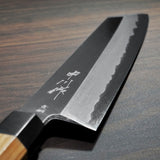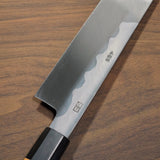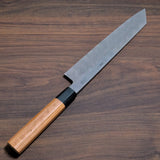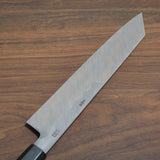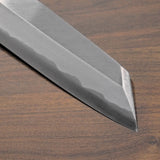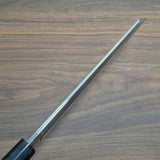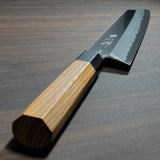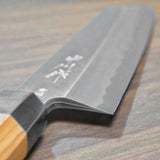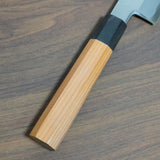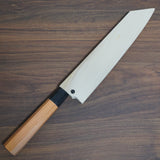Nakagawa Blue #1 Wave Kiritsuke Knife 270mm
Blade Material: Blue #1 / Aogami #1 Clad Soft Iron
Core: Blue #1 / Aogami #1 / Aoichi
Outside: Soft Iron
Handle Material: Octagonal Yew
Bolster:Water Buffalo Horn
Blade Length: 270 mm
Edge Length: 255 mm
Blade Width: 46 mm
Blade Thickness: around max 4.7 mm
Weight: around 280 g (9.9 oz)
Made in Japan
Nakagawa Knives
Shiraki Knives in Sakai City was one of the best blacksmiths in Japan. Kenichi Shiraki was a famous blacksmith who can make White #1 water quenching Honyaki (Shiroichi Mizu Honyaki) knives. It is said that there are only about four blacksmiths who can make this knives in 2021. That much skill is required.
Satoshi Nakagawa has studied and made knives there for 16 years. He closed Siraki knives after master Shiraki retired and started Nakagawa knives in April 2021. He can also make Shiroichi Mizu Honyaki knives, single and double bevel knives and stainless and carbon steel knives. This fact means he is one of the best blacksmith in Japan. He has inherited Sakai's 600-year history and tradition of making cutlery.
Note:
Carbon Steel is sharp. So many chefs prefer the sharpness of carbon steel. But carbon steel is not rust resistance. Rust will appear. Please wash, wipe and dry it up well after use. In case rust appears on the edge, remove it by a sharpening stone. In case rust appears on the blade, use cleanser(in case of stainless steel) or scourer(in case of iron steel). (scratch may appear)
Don't twist edge, and don't cut and hit frozen foods or bones, the edge will be chipped or broken since the blade of Japanese is thinner for sharpness.
















